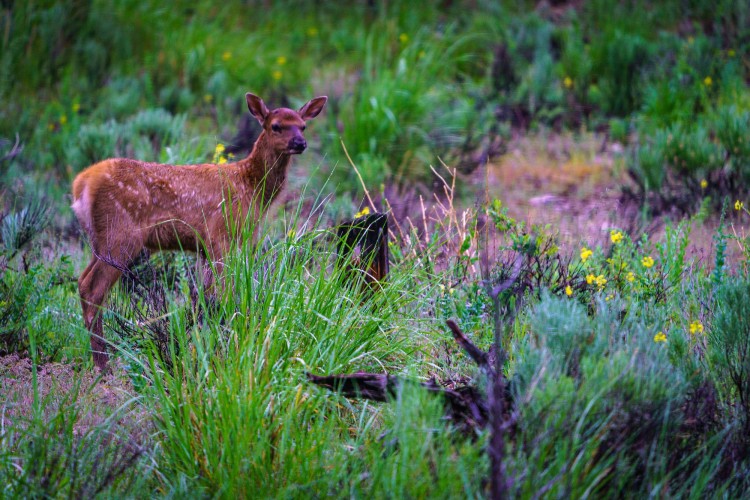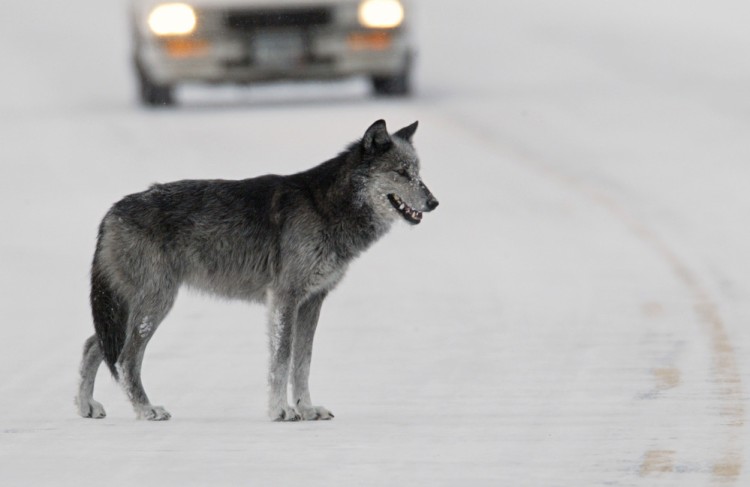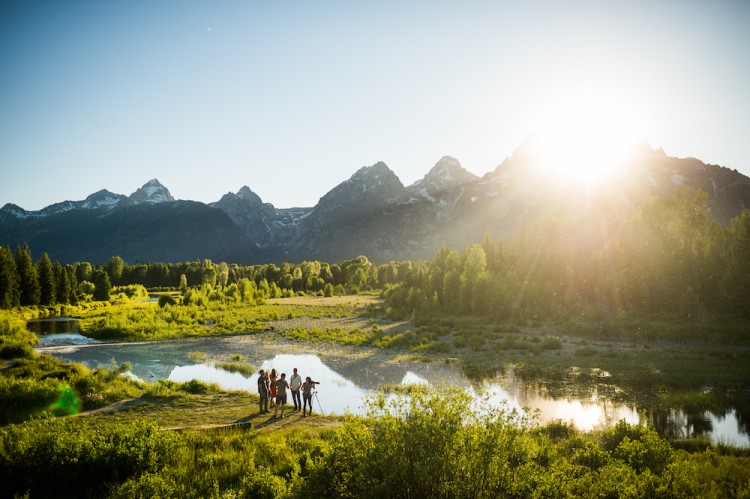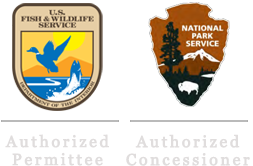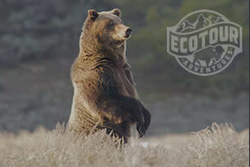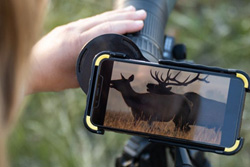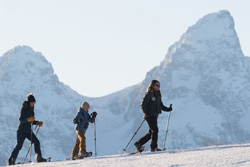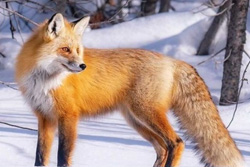Winter Wonderland in Yellowstone National Park, an Unforgettable Multi-day
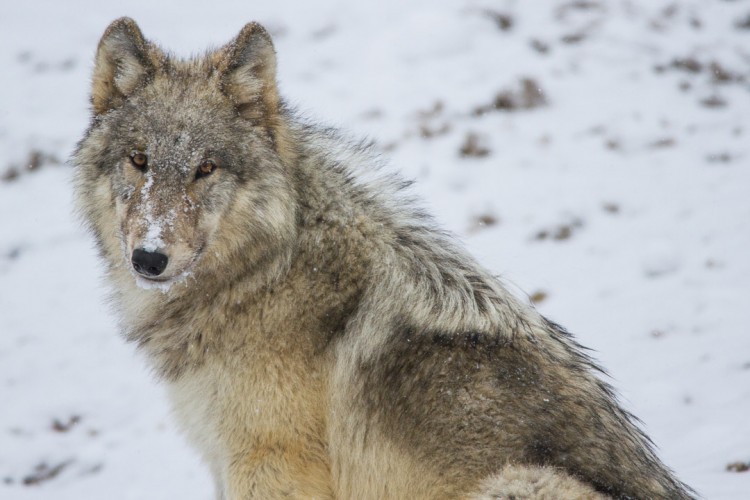

It’s the heart of winter in Yellowstone National Park, one of the world’s most spectacular winter wonderlands. The crowds of summer have been replaced by chilling wind and deepening snows, the only warmth coming from the steam of the Park’s thermal features. But for those willing to venture into this winter wonderland, the trip of a lifetime awaits. Earlier this winter, Jackson Hole Ecotours Naturalist Josh Metten joined the Goh Family on an unforgettable five day tour of one of our wildest parks, experiencing and photographing its wildlife, mountain landscapes, thermal features, and more.
Searching for the wild in Yellowstone’s Lamar Valley
Situated beneath tall peaks of Yellowstone’s Northern range, the Lamar Valley is often called the American Serengeti. Its terrain and open valley provides abundant wildlife habitat year round, perfect for big game such elk, bison, bighorn sheep, mule deer, pronghorn antelope, and moose. Rivers provide habitat for waterfowl, the diminutive american dipper and families of North American river otters. The howl of wolves, once silenced across the west by extermination, has been heard here since their successful reintroduction in 1995.
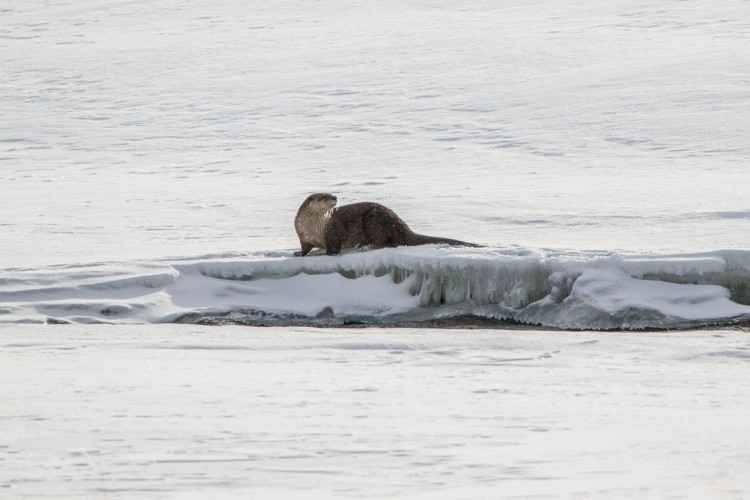
Returning along the Lamar river after lunch in Cooke City, we found this otter and three others (not pictured).
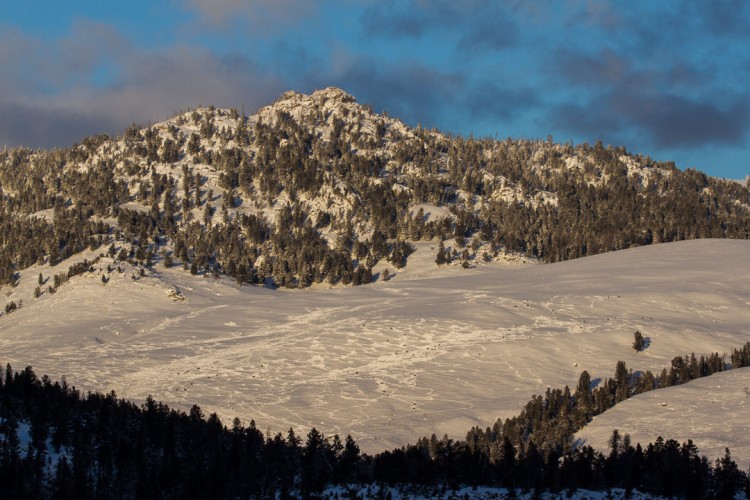
At sunset, we viewed this far off bison herd demonstrating a mobbing grazing pattern. In winter bison walk single file through the snow then spread out to graze. This strategy allows them to conserve energy by taking the same path through the snow, stay close to avoid predators, and constantly change grazing areas, maximizing forage quality and preventing overgrazing while fertilizing the land with their scat.
Howling wolf and the Yellowstone River
In winter, the higher elevation snowy interior of the park is accessible only via over snow vehicles. We used the comforts of an enclosed vehicle called a snowcoach to access the Grand Canyon of the Yellowstone. Approaching Norris Junction, we were shocked to find a howling wolf right alongside the road! We listened and watched for over 10 minutes as the solitary wolf, likely from the Canyon Pack, attempted to contact others. As it disappeared into the snowy forest we continued on to the Grand Canyon of the Yellowstone River, viewing both the upper and lower falls as well as trumpeter swans and other waterfowl along the river.
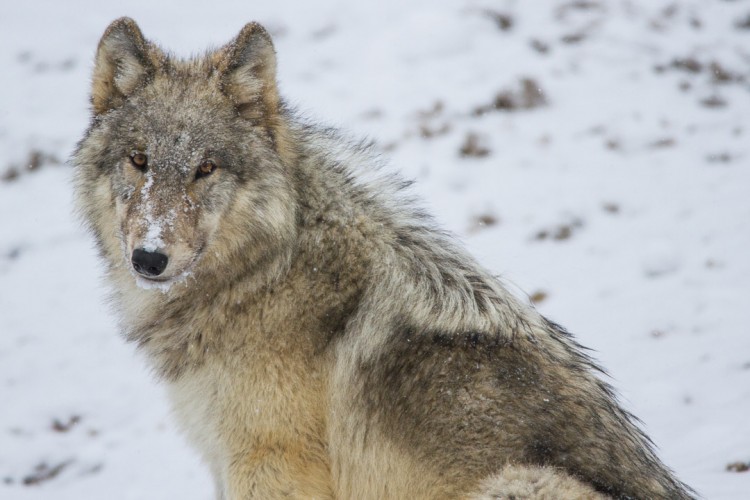
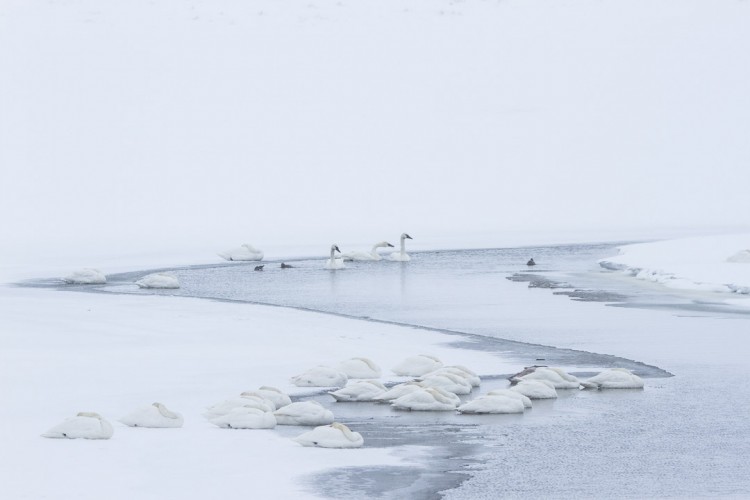
South to Old Faithful and Yellowstone’s Geyser Basins
The lower loop of Yellowstone continues southward towards Old Faithful and some of the Park’s most spectacular geyser basins. Wildlife are abundant along the rivers, and geyser basins come alive with steam, color, splash and sound surrounded by snow.
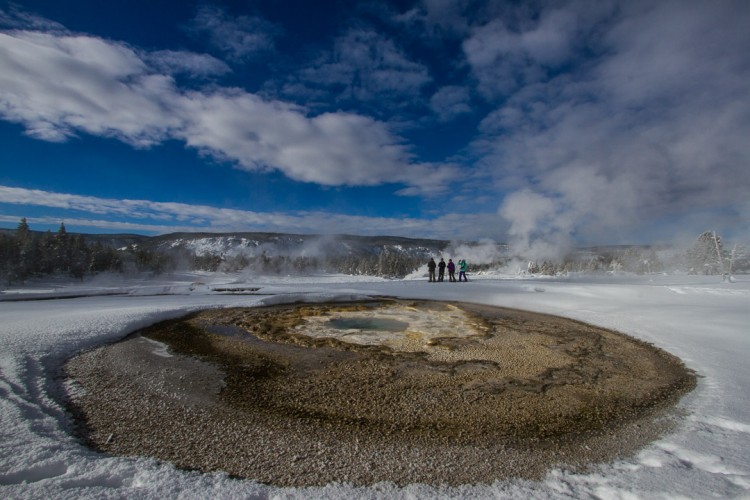
Hot pools display a variety of colors from blue at nearly 200 degrees F to white, yellow, orange, brown, and green. Each color corresponds with a different microbe, making up the diverse micro-ecosystem within Yellowstone’s geyser basins.
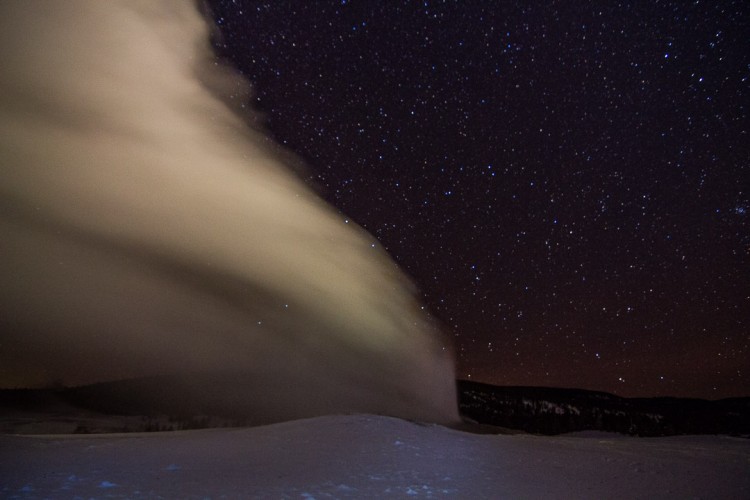
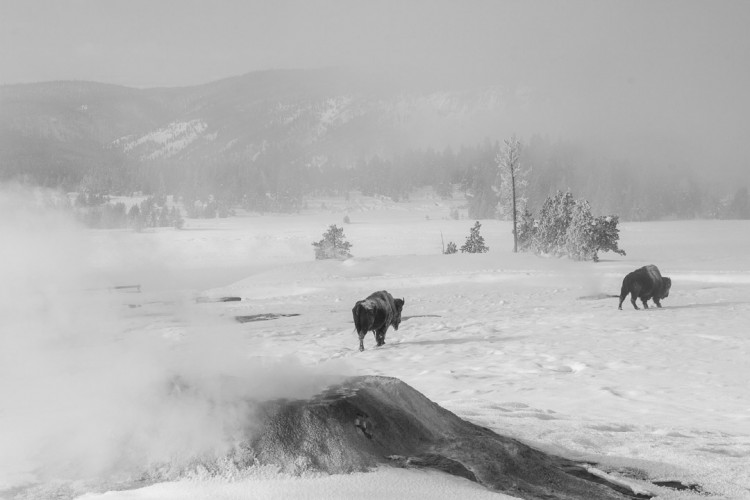
“To preserve unimpaired for present and future generations”
Now going into its second century, the National Park Service has a tenuous future. Climate change, relevance to future generations, and developments along its borders all threaten the numerous places including Yellowstone the Park Service attempts to preserve for future generations. As we left Yellowstone on our last morning, the mornings first light illuminated Electric Peak, above the Roosevelt Arch near Gardiner, MT. From mountains to valleys, wolves to hot springs, Yellowstone is a glimpse of our wild past. What will it resemble in the future?
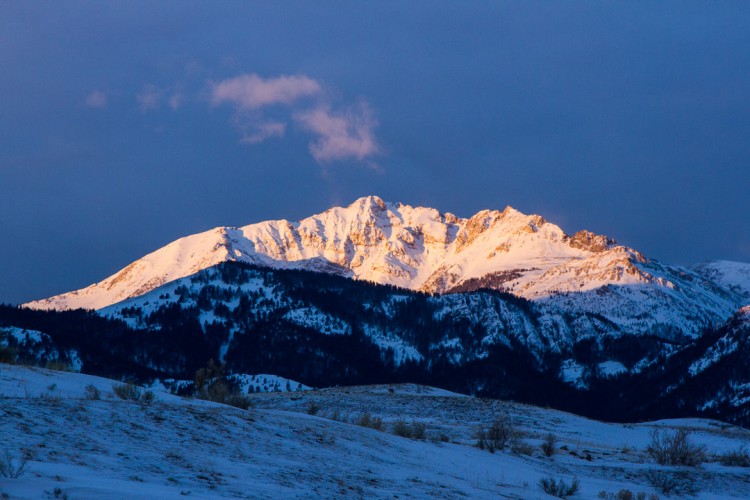
First light on Electric Peak in Northern Yellowstone National Park.
Jackson Hole Ecotour Adventures offers single and multi day trips through Grand Teton and Yellowstone National Parks year round, to read about a trip from this past fall check out this post: Wildlife Abounds in Fall Multiday
To join us exploring the Greater Yellowstone Ecosystem visit our website or call 307-690-9533. We hope to see you soon!
Words and photos by Naturalist Josh Metten




